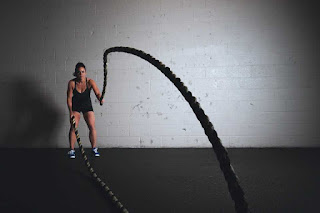 |
| Use your mind to improve every exercise session. |
There is a time to focus intently and a time to be distracted
Trainers and trainees spend a lot of time on what are called acute program variables when they plan a workout.
Acute program variables
Acute program variables for strength training are the amounts of sets, reps, load, rest time and exercises used for the workout.
These are important. These things should be planned out.
You can miss out on all that the workout has to offer if you only focus on the acute program variables that you can measure.
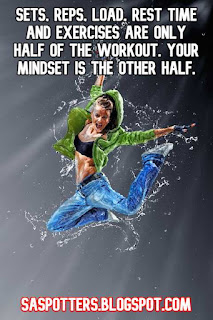 |
| Get into the right zone. |
Don't turn your workout into a checklist
This type of workout can turn into a 'checklist' way of working out. A checklist way of working out is simply checking what you did off the list without a lot of interest.
You got it done. That’s it. It's time to go home. You miss out on some really good stuff when you go about it this way.
The other workout variables that we need to consider
There are other variables that cannot be measured as well as acute program variables.
The one I am going to cover today is focus.
Use focus during your workouts
Where should you put your focus? Where should you really be putting your attention when you are working out? Is there a best place to put your focus? There is.
You should focus on the task at hand, working out, and take the focus off anything that you are not doing at that time.
Let your gym time be all that you are focused on when you are there.
 |
| Focus improves performance. |
Association and disassociation
Association and disassociation are terms in sports psychology.
You can use both of these things in sports and training very effectively. Association and disassociation are used in both exercise and sports as powerful tools.
Association
To associate is to focus in on exactly what you are doing at that moment.
Being mindful is what it’s more commonly called today.
An example would be when you do a set of curls you attempt to feel everything.
You feel the elbows stay in at the sides of your body. You feel the elbows lock out at the bottom. You feel the pause of the motion at the top.
You focus on exhaling as you lift the weight up and you focus on inhaling as you lower the weight down.
Most importantly you feel the muscles work (in this case the biceps) as you do the exercise. You focus on the burn from the lactic acid and you focus on the form to do it correctly.
Association brings mindfulness to every part of your exercise routine. It's like practicing mediation and exercising at the same time.
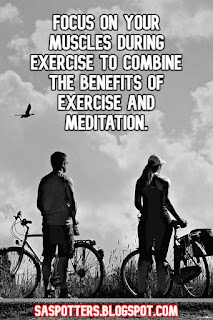 |
| Focus on the moment. |
Disassociation
To disassociate is to not pay attention to what is happening in the body. It is like daydreaming or purposeful distraction.
There is a place for this as well. When a cyclist is doing intervals on the bike and the lactic acid they feel in their quads is so strong that they want to quit, it is good to disassociate from the burn and turn the attention outside the body.
If you focus on the pain too much, you will quit sooner than if you focus elsewhere.
This tool helps athletes to get the most out of their interval program. In this case, you to want to take your focus off what you feel at the time and put your focus elsewhere. It's like some form of distraction.
Use your focus to improve your workout
Focus on the workout when you exercise.
More specifically; focus on the exercise, set, reps and load in that order.
Give everything else that's going on in your life a rest.
Give a rest to all that is going on in your life that you can’t solve during that time you are working out.
Put what you must do at work or problems that you have on hold while you work out. Stay in the moment.
This is harder for some than others, but I believe we that can all get better at it.
I like to work out alone a lot for this reason.
There are times that I get a lot of benefit from a workout partner, but there are other times that I really want to focus solely on the peacefulness of getting a good workout in.
My performance may be better as far as acute program variables when there is a training partner to push me, but the focus I have is stronger when I train alone.
What’s better?
I guess that it depends on what you think is better.
If you think that getting that personal record on the bench press is of total importance of the day, then I think that it’s best to have a partner around.
But if your view of having a really great workout means you can let go of every other concern you have and focus in on getting a good workout, then training alone with no distractions is best.
Everybody is different. Different scenarios call for different approaches.
 |
| Your state of mind determines a lot. |
Tune in to your workout
Tune in.
Research shows that we get more out of working out if we focus on working out exclusively.
Body builders have known this for years.
In fact, body builders are very skilled at the mind to muscle connection.
Many of them spend less time worrying about how many or how much and simply focus more on the feel.
The two methods of association
There are two ways of associating that work.
You can focus on the feel of the muscle or you can focus on the form that you use.
Naturally, you can do both. Both can get you to the same place.
If you really focus on the form of doing every aspect of the rep correctly, then the feel will be there.
Do you feel the exercise in the correct targeted muscle group?
If you do triceps press downs, you should feel it in your triceps.
You may be surprised by how many clients state “I’m not sure” when I ask them if they feel it in the targeted muscle group.
Then they may start to focus and state “yes”.
If you feel it in the target muscle, you will get more out of the exercise.
This is easier to do with isolation exercises and nearly impossible to do with what we call compound exercises.
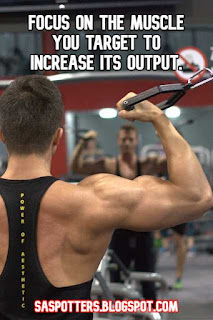 |
| Focus on your muscle. |
Compound exercises
Compound exercises work more than one muscle group at a time.
A squat is a compound exercise because it works the glutes, quads and hamstrings at the same time.
It’s harder to focus in on a muscle group because the activation is being shared by at least three muscle groups.
Just because you don’t feel it there doesn’t mean that it’s not working. It simply means you will not feel one muscle group. In cases like this it’s best to focus on the form.
Isolation exercises are exercises that use one joint at a time. One muscle group is being targeted.
A leg extension is an isolation exercise for the quad muscle which is the anterior upper thigh.
In this case you can focus on the muscle being stimulated - or the form. Both roads will get you to Rome!
How to focus on form
Start from the beginning when you focus on form.
Before you start your set, think about what you need to do form wise and what areas are being targeted.
Get zeroed in before you start the movement.
Then think about your posture - whether it is your standing posture or seated posture depending on what you are doing.
Think about keeping your core tight and your spine straight.
When you stand, think about your foot location. Are they where they should be so that you have a good athletic base?
How is your posture when you are seated? Is your back all the way up to the back rest? Are you slouching?
Are your elbows, wrists and hands in the position that they should be when you start the motion? Are you controlling the movement?
Think about where the full range of motion is for the exercise and do it.
If you get choppy or hyper-extending, stop it.
How does the weight or load feel during the motion?
Is it light enough to keep good form for the number of reps you are doing? Is it heavy enough to challenge you? How does it feel?
I can tell after one rep if I’m going to be able to reach my rep goal for the set. You should train yourself for that kind of awareness as well.
 |
| Focus on your posture. |
Focus on your breath during exercise
Focus on your breath during your set as well.
Are you breathing out during the lifting portion of the lift? Are you breathing in when the load is being lowered? Where is your gaze?
Are you focusing your eyes where they should be? Where is that? If it’s in the mirror, then focus on how your form looks. If you are not using one, attempt to gaze straight ahead.
Be careful not to jerk your neck around. Keep your body still.
There will be times where it is good to look down at your quads or the weight stack on a leg extension exercise, but do not look at your legs or feet while doing a squat! Gaze straight ahead.
Make sure that you focus on your body.
Bizarre imagery
Bizarre imagery is another form of deep focus. Imagery is a part of associating. Visual imagery is visualizing what you want to occur.
Arnold Schwarzenegger used what is called bizarre imagery.
He would exaggerate a thing or a situation to help him focus on what he wants. In the case of Arnold, he would imagine that his shoulders looked like big bowling balls.
Research shows that this kind of imagery works.
I use this type of imagery as well at times. I have competed in body building.
I visualize how I want the muscle group that I’m working to look on stage when I work out. I imagine it as deeply as I can.
 |
| Visualize your goals. |
Summary
To associate or not associate, that is the question! Yes is the answer!
Focus your mind before you enter the gym.
Tell yourself that anything not related to your gym workout will be put on hold until you are done. Make this declaration.
Find a way to focus on what you do during each exercise - even the exercise bike.
Do you realize how many people just mindlessly pedal?
Did you realize that the stirrups on the bike aren’t there to keep you from falling off? They are there to get you to pull back with the pedal because 1/3 of the pedal stroke is done by the hamstrings - but not if you can't pull back.
Focus. Continue to get zeroed in on every part of every exercise after you warm up.
Your mind may drift and you may daydream. That is okay. Bring it back.
I’m willing to bet you that your results will multiply if you start to work out this way.
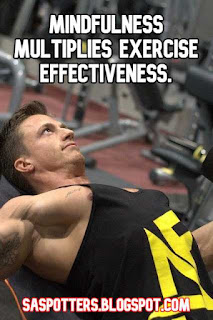 |
| It's about your mental state. |
This article is written by Rob Maxwell, M.A. Exercise Physiology, CSCS and ACSM CPT from www.fittothemax.net. Follow him on Twitter.
No comments:
Post a Comment